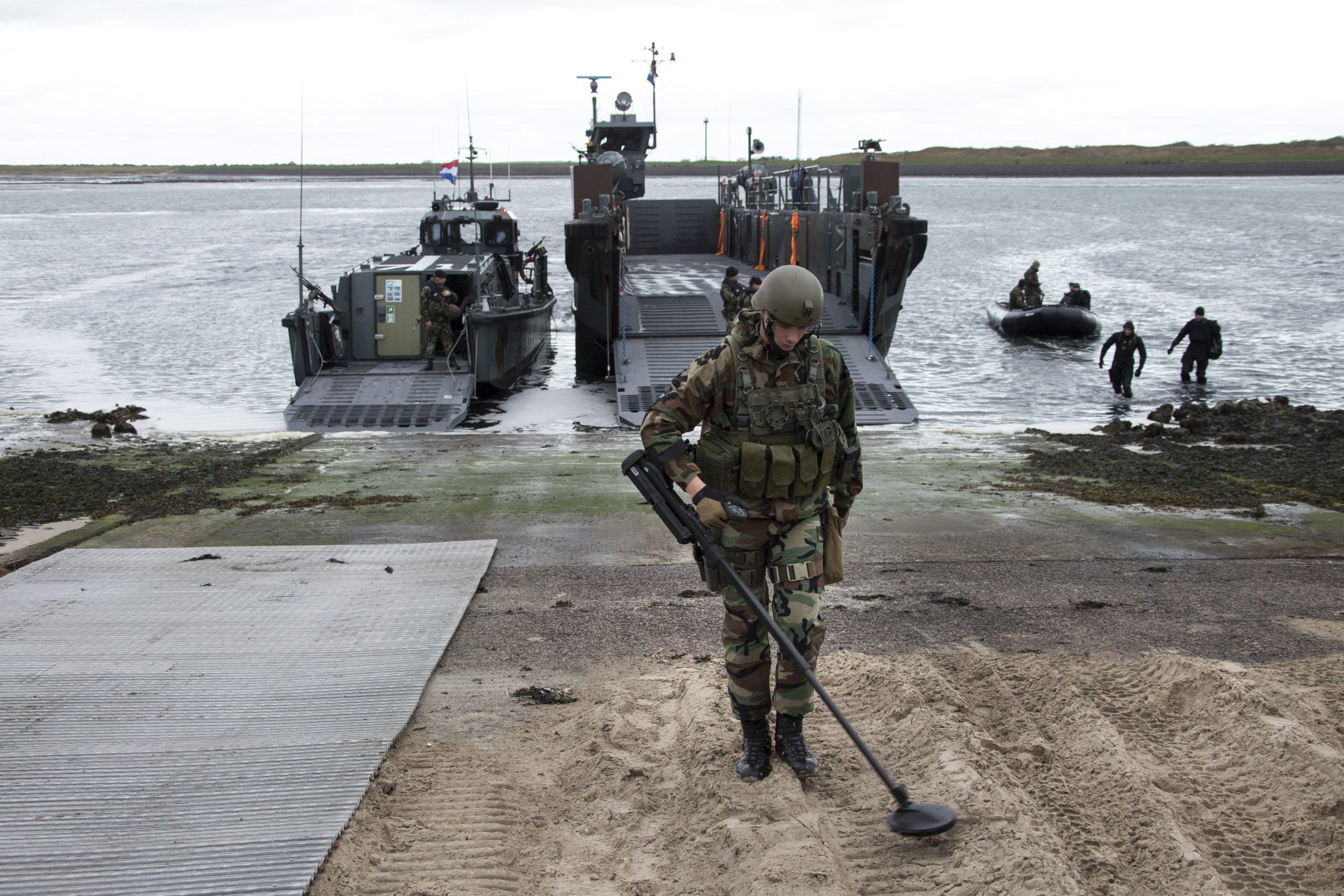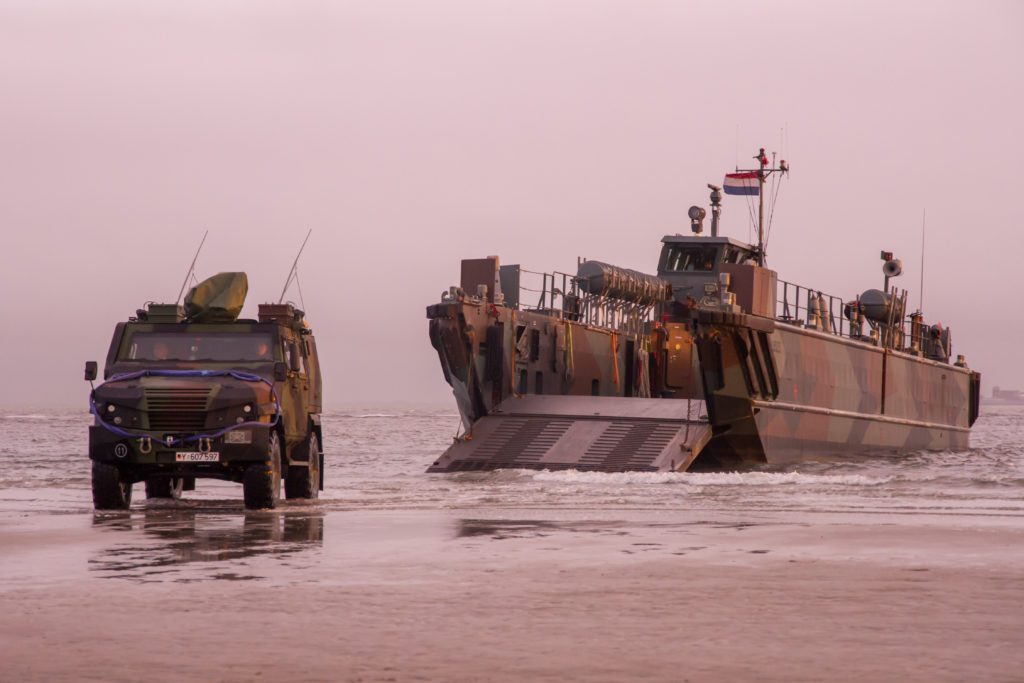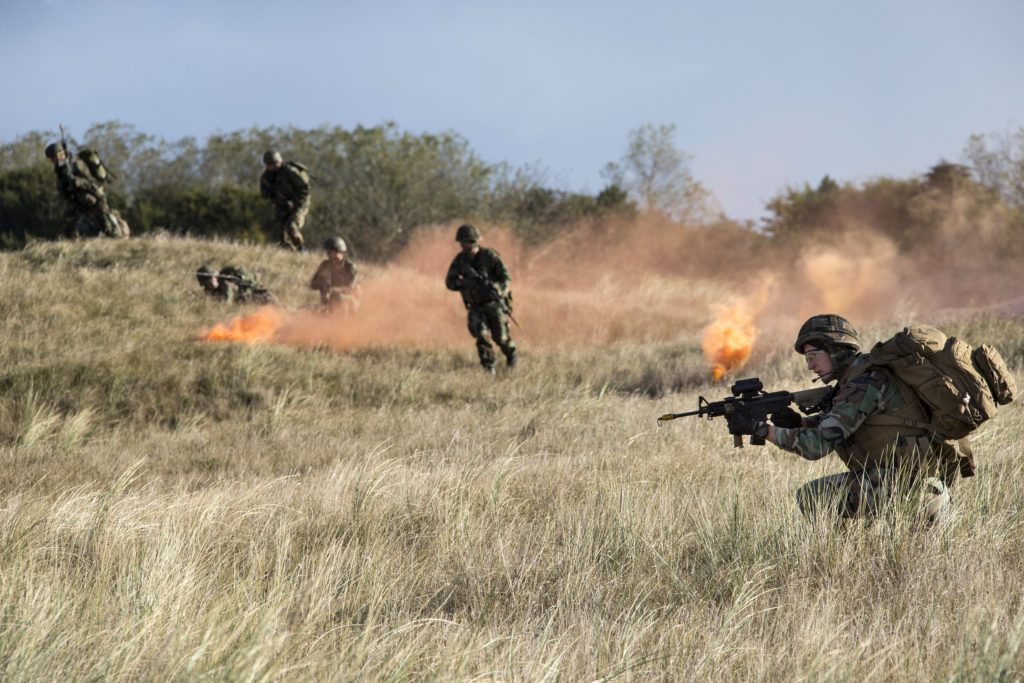Cooperation on land and at sea – The binational amphibic group
Basic Facts
In 2014, when Russia annexed the Crimea, the focus of german defense policy and strategy returned on the task of national defense. Due to the previous planning, german marines were able and equipped to fight in an asymmetric environment, whereas the German Seebataillon had not enough personnel and material for a comprehensive amphibic operation. To fulfill amphibic tasks, the Seebataillon now works hand in hand with the dutch Korps Mariniers. Especially the Dutch expertise in this field and the possibility to use the “Karel Doormann” spoke in favour of the integration of the Sea Bataillon into the Dutch unit. The Seebataillon, that started with 800 soldiers since 2014, has now increased its ranks to 1200, while the Dutch Korps Mariniers, with origins in the 17th century, comprises of around 2500 men and women. Both units incorporate specialized units for the combat at sea and land and support units. Support units are for example reconaissance teams or the Mine Clearance Divers.

Main Tasks and Goals
While it is one of the main priorities of the German Marines to catch up with the amphibious skills of the Dutch Marine Infantry, the shared use of Dutch vessels like the “Karel Doormann” (multipurpose ship) or the “Johan De Witt” (landing platform dock) for amphibious operations enables the Dutch Navy to reduce the costs and increase the workload of these vessels. One of the tasks of the cooperation is it apparently to create synergies between the two units and branches. Besides, the harmonization of material and procedures will make it possible to deploy the units together for an effective operation. In September 2019, the Seebataillon and the Korps Mariniers were in the Caribbean Sea for the maneuver “Caribean Archer”. The successful humanitarian mission on the Bahamas – due to hurrican “Dorian” – after the exercise shows the possibilities of the cooperation on a small scale.

Current Role
The German Navy as it stands, contributes to the NATO Response Force (NRF) by taking part in the NATO Amphibious Task Group (ATG), under Dutch lead, which is part of the Initial Follow Forces Group (IFFG) of the 2020 NRF. Even though the Dutch and British Navy’s have a lead in numbers, Germany is also contributing 75 soldiers of the Seebataillon. They support the ATG in the sections of Very Shallow Diving, Reconaissance and Force Protection. Right now, Seebataillon and Korps Mariniers also profit of combined trainings and the shared use of dutch vessels.
Vision
In 2016, german defense minister Ursula von der Leyen suggested, that the Cooperation between Seebataillon and Korps Mariniers is the first step of an integration into the dutch formation and could serve as an example for the building of an european defense union. Even though the Seebataillon and Dutch marine infantry are increasing their cooperations, they don’t exchange personnel on a large scale and use different material in some areas. Apart from these obstacles, the Dutch-German cooperation offers advantages for both of the States and serve as an example for binational european defense cooperation. To fulfill this goal, the integration has to be intensified in the next years.

Conclusion
Through this cooperation, Germany and the Netherlands are able to pursue the idea of a close collaboration in affairs of national defense. Advantages for both sides lay in shared costs and profiting of the combined training, especially in the ability for amphibious fighting and working. Indeed, the integration is not fully accomplished, but the cooperation can also serve as a blueprint for european military cooperation on maritime level. In times of a worldwide pandemic and profound economic problems, resulting of that pandemic, the exoneration of public budgets can be fulfilled through an increased cooperation.

0 Comments